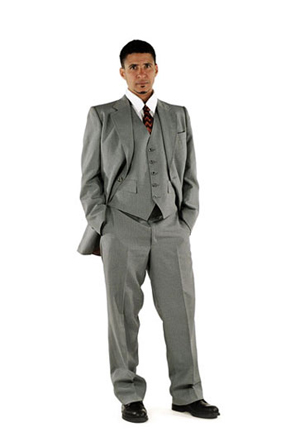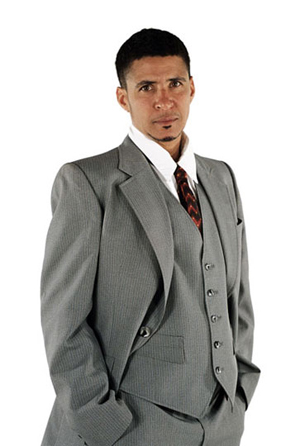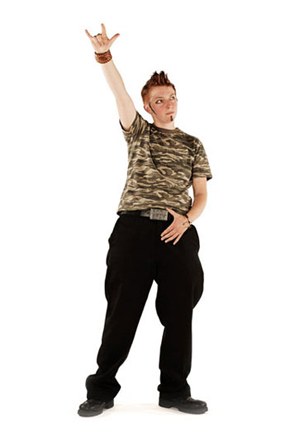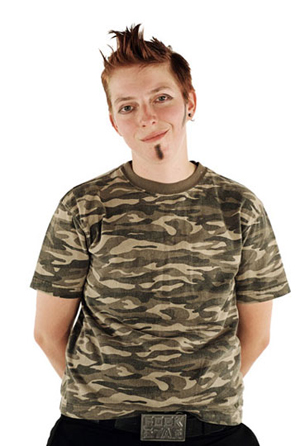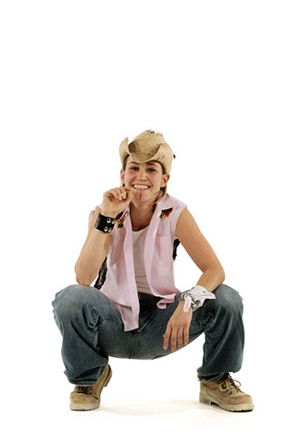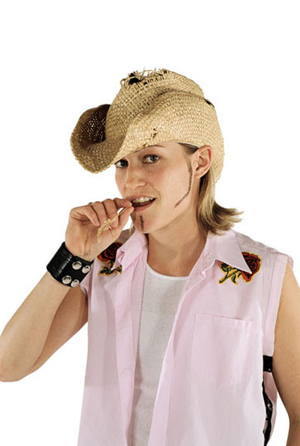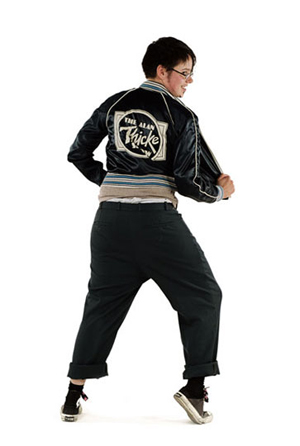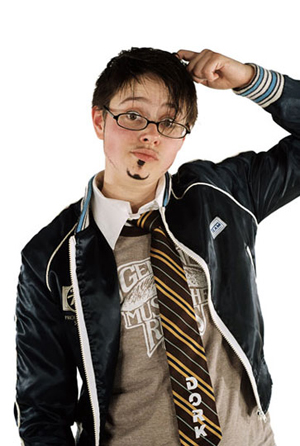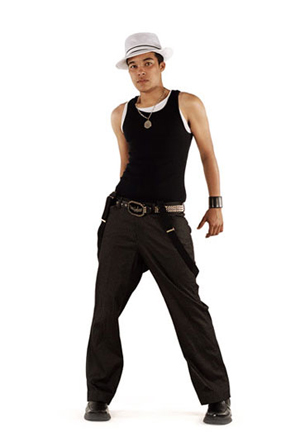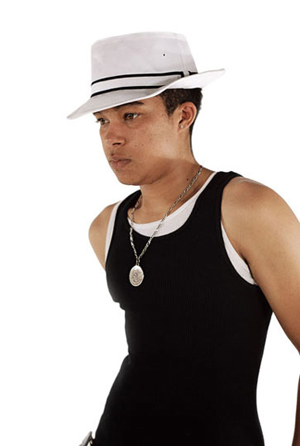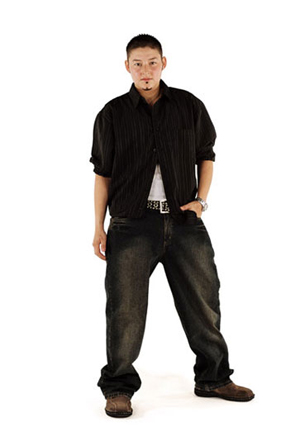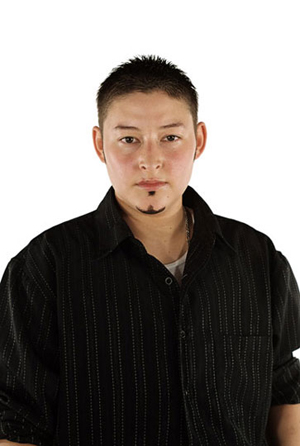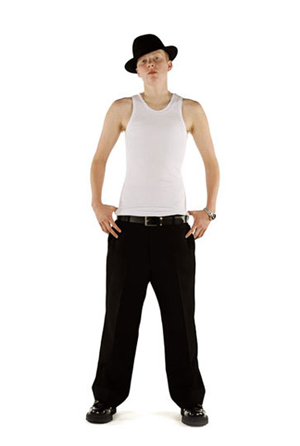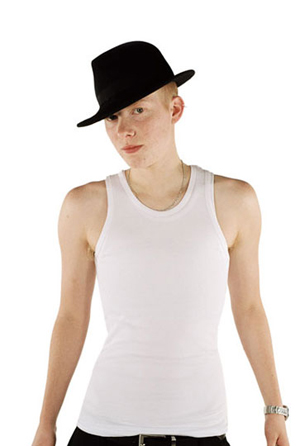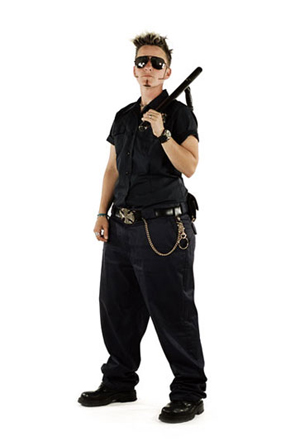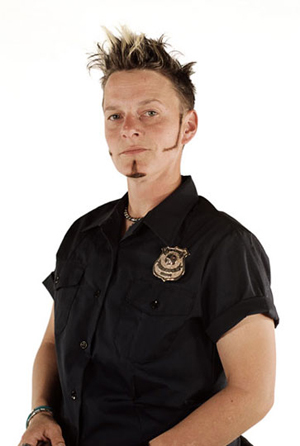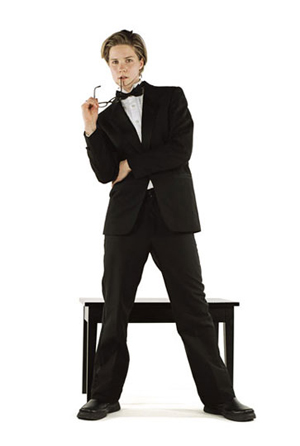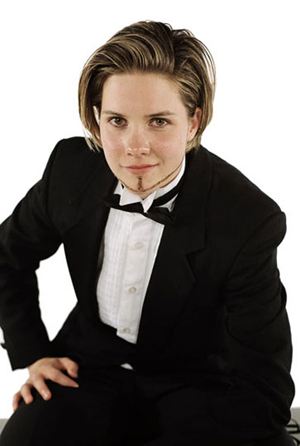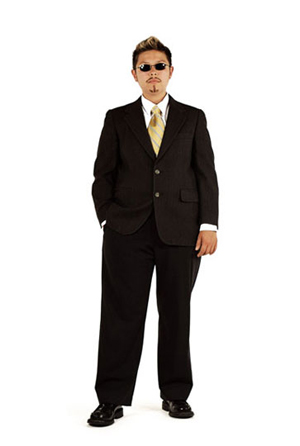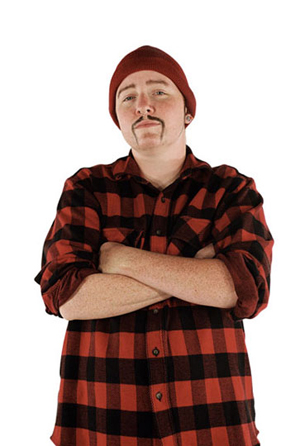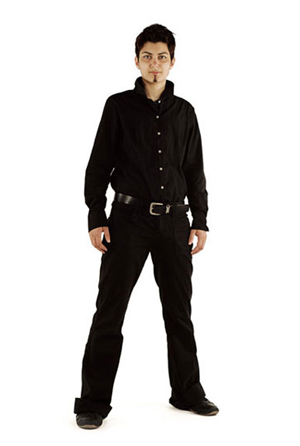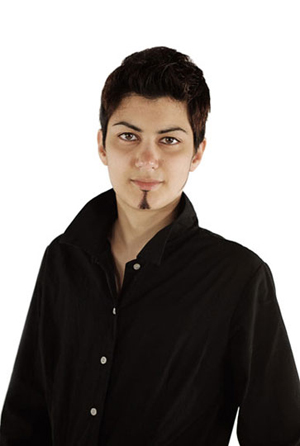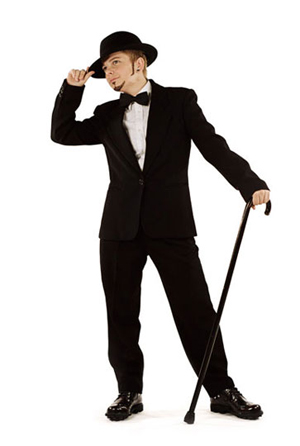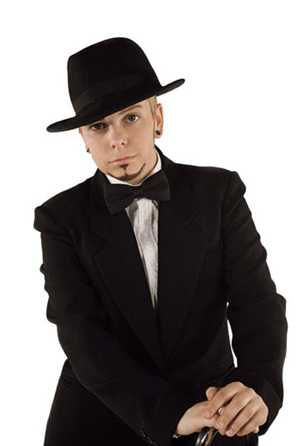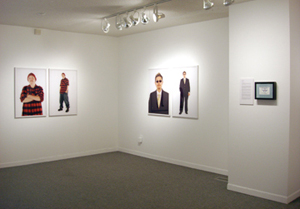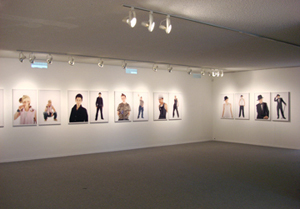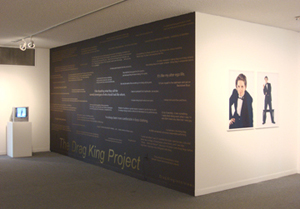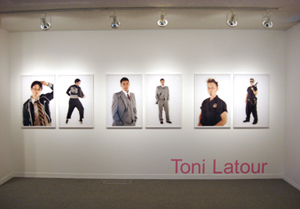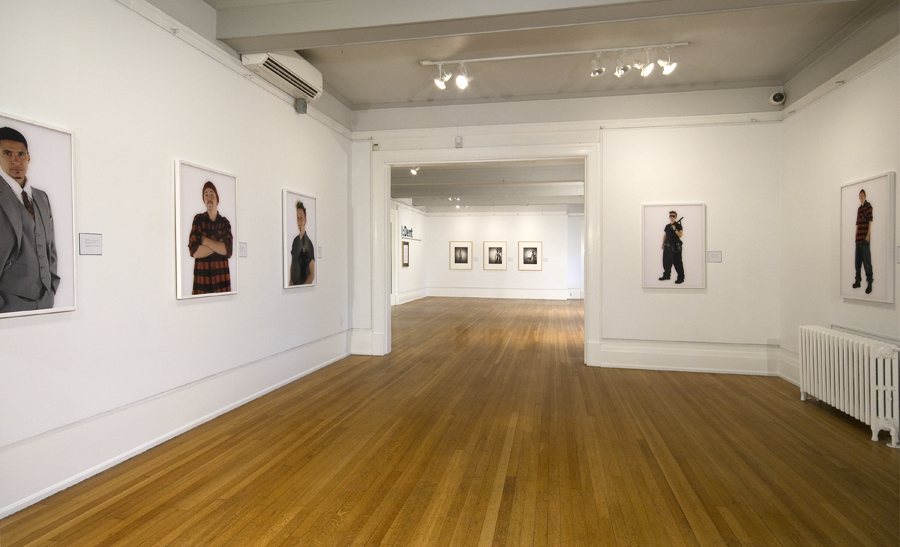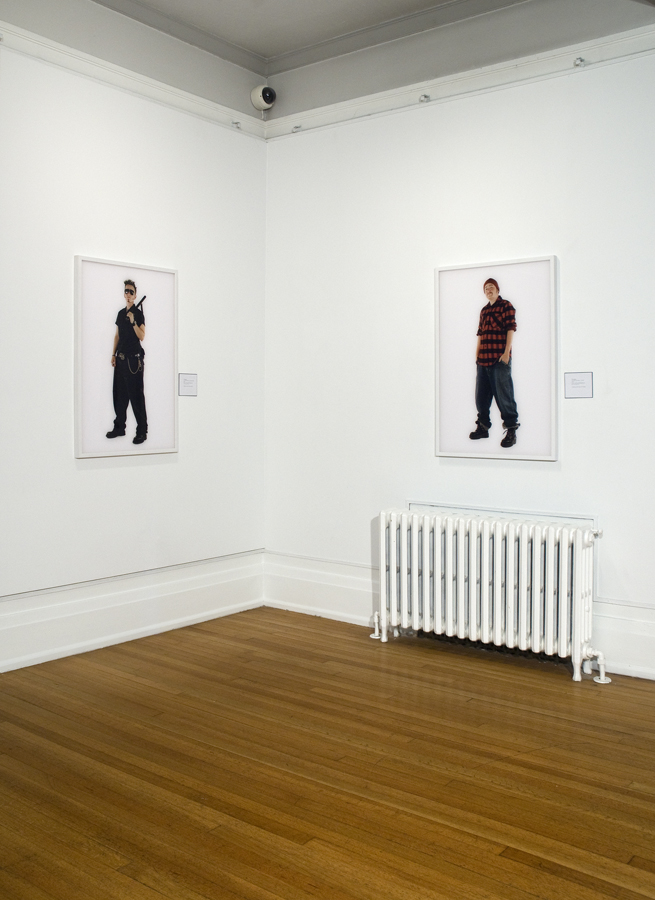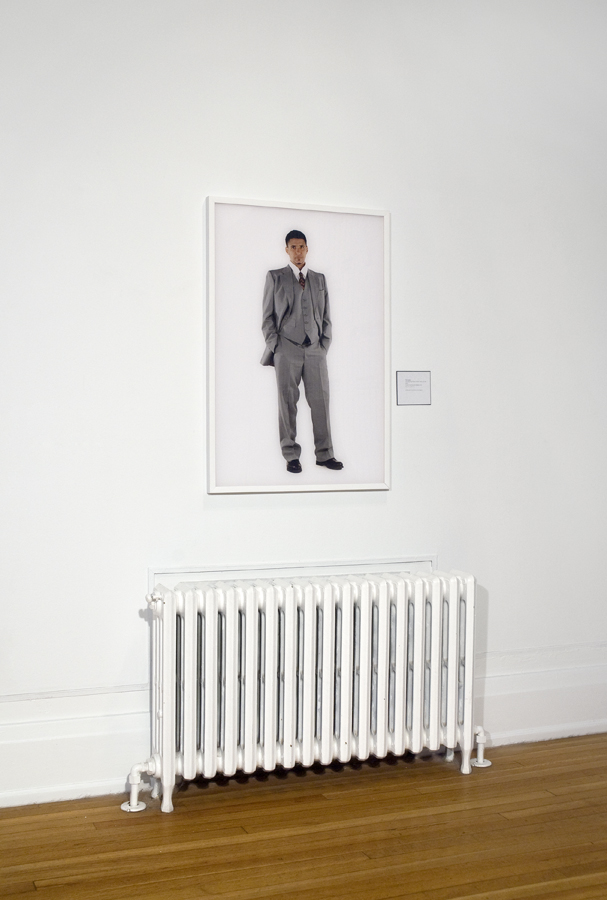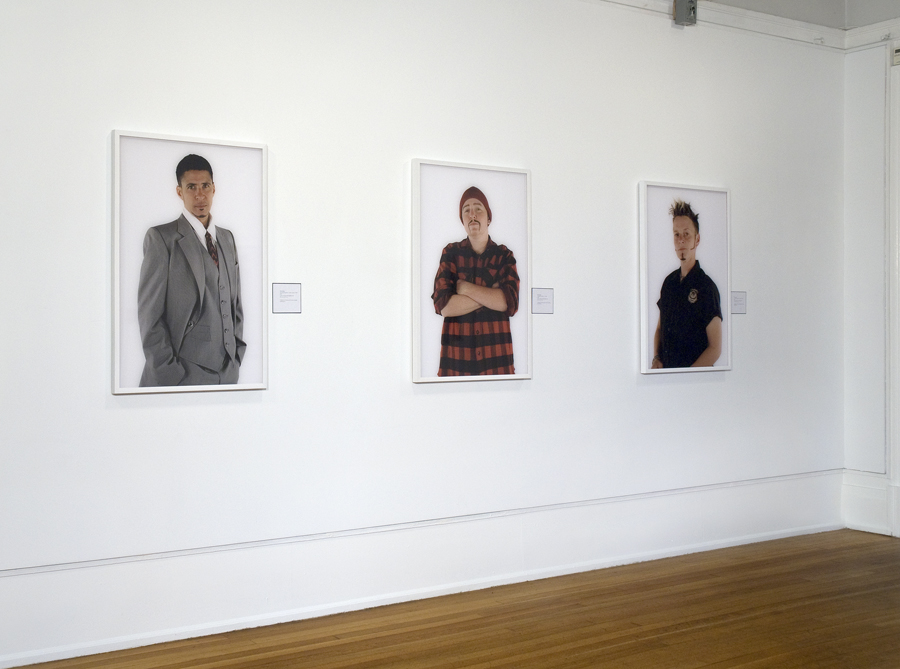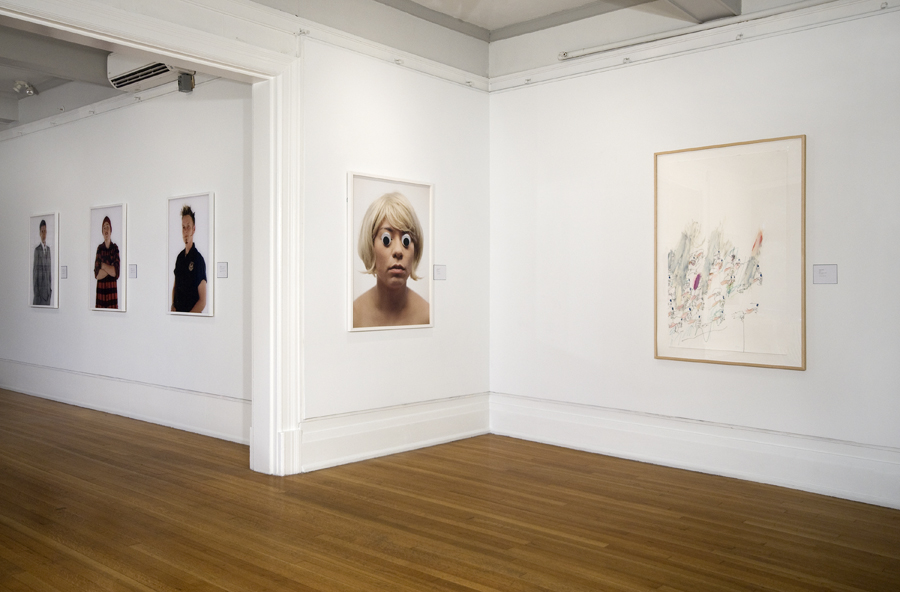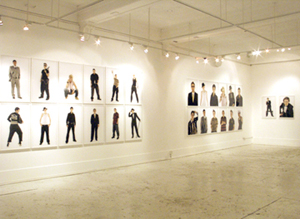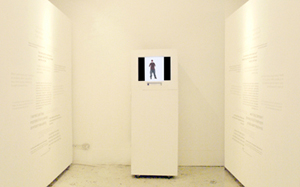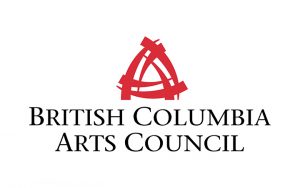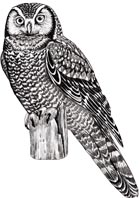“…many lesbian photographers have photographed themselves, their lovers, and their communities motivated by the belief that photographic self-representations are not only empowering in and of themselves, but, even more important, further the process of political consolidation and mobilization.”
Soloman-Godeau, Abigail, Representing Women: The Politics of Self-Representation, Reframings: New American Feminist Photographies, ed Diane Neumaier, Philedelphia, Temple University Press, 1996.
In 2005, Toni Latour worked with Vancouver drag king troupes DK United and $3 Bill to produce The Drag King Project. The membership of both troupes crossed age, culture, ethnicity, sexuality, gender and experience. The result was a project made up of 26 transmounted photographs, video documentation of live performances, and vinyl wall-mounted text derived from audio interviews with the participating kings.
Giving voice to one’s world can be both a declaration and a celebration. Latour’s motivation in conceiving The Drag King Project came from a desire for continued queer representations from within queer communities – creating an opportunity to mirror images and ideas back for reflection.
For decades we have seen drag queens represented in popular culture (often as the subject of ridicule, unfortunately), creating a firmly planted image within mainstream consciousness. This is not the case for drag kings. Despite their historical and contemporary presence, including appearances on British music hall stages since the early 1900’s, even the term drag king, is widely unknown. Today, in Vancouver and across Canada, both drag king and LGBTQ2 communities repeatedly carve out places where definitions and types are celebrated, mocked and transcended.
Historically, queer communities have fought long hard battles, and as a result, we live in a time that is increasingly open to social transgression, gender manipulation and sexual complexity. As outlined in Smith and Greig’s Women in Pants: Manly Maidens, Cowgirls, and Other Renegades (2003), Leslie Feinberg’s novel Stone Butch Blues (1993) and others, in as late as the 1960’s butches, masculine-spectrum lesbians and trans men were imprisoned for wearing men’s clothing, beaten for appearing masculine, and belittled for showing affection to their lovers. Their strength and determination, pre and post Stonewall, provides us with a better landscape to operate in, but the struggle is not over.
Donna McAlear says “Self-definition can be a conscious, lifetime project if one’s gender, race and sexual preferences are at odds with society’s norms. A strategic counter-position in self-assertion often presents itself in exaggerated performance and over-exposure, with prime examples being drag queens and kings of gay and lesbian culture” (McAlear, Donna, Rosalie Favell: I Searched Many Worlds, Winnigeg Art Gallery, 2003).
Within the past decade, despite minimal exposure and awareness from popular media, drag kings have exploded on queer Canadian scenes. The drag king troupes Latour worked with explore constructs and embodiments of masculinity from a variety of perspectives. They provide us with a better understanding of the performativity and fluidity of gender and sexual identities. In addition, they demonstrate that masculinity is not exclusive to biology, as they both perform and live their genders. On stage and on the street, drag kings, butches, gender queers and trans folk offer alternatives to the commonly accepted gender binary system with non-conformity defining many queer communities across the country.
Through this collaborative effort, Latour and her participants give voice and recognition to queer culture in Canada. They share their lives, their ideas and themselves with both neighboring and divergent communities. In the spirit of inclusion, The Drag King Project contributes to ever-expanding queer representations and marks a time of celebration of drag king visibility.
Buster Cherry, $3 Bill, transmounted lightjet prints, 24″ x 36″ each, 2005
Cazzwell Van Dyke, DKU, transmounted lightjet prints, 24″ x 36″ each, 2005
Daxx, DKU, transmounted lightjet prints, 24″ x 36″ each, 2005
Edward Malaprop, DKU, transmounted lightjet prints, 24″ x 36″ each, 2005
Buttah, DKU, transmounted lightjet prints, 24″ x 36″ each, 2005
Heat, DKU, transmounted lightjet prints, 24″ x 36″ each, 2005
Kyle, $3 Bill, transmounted lightjet prints, 24″ x 36″ each, 2005
Luke Wolf, $3 Bill, transmounted lightjet prints, 24″ x 36″ each, 2005
Majik, DKU, transmounted lightjet prints, 24″ x 36″ each, 2005
Lars, transmounted lightjet prints, 24″ x 36″ each, 2005
T, $3 Bill, transmounted lightjet prints, 24″ x 36″ each, 2005
Sammy Tomato, DKU, transmounted lightjet prints, 24″ x 36″ each, 2005
Ryan Coke, $3 Bill, transmounted lightjet prints, 24″ x 36″ each, 2005
Exhibition Installations
The Drag King Project, Installation shots of photos, video and vinyl wall-mounted text, Harcourt House, Edmonton, 2007
The Drag King Project, Installation shots, Burnaby Art Gallery, 2009
The Drag King Project, Installation shots of photos, video and vinyl wall-mounted text, Gallery Gachet, Vancouver, 2006
Acquisitions
In 2006/07, The Surrey Art Gallery acquired 3 of The Drag King Project images for their permanent collection. They commissioned writer Donna McAlear to produce a text in response to the work.
In 2008, The Portrait Gallery of Canada (PGC), part of Library and Archives Canada (LAC), acquired the entire project.
The National Portrait Collection, held by LAC, was developed with the goal of documenting historical personalities important to Canada’s development. In addition to the historical collection, the PGC also collects contemporary works that explore today’s issues. Part history museum, part art gallery, the Portrait Gallery’s active program of traveling exhibitions, educational initiatives and community partnerships brings a unique collection of more than four million photographs, paintings, prints, drawings, caricatures, sculptures and films to all Canadians.
The Drag King Project has seen great successes leading up to this acquisition. In addition to considerable press and publication, it was exhibited in three Vancouver galleries and was included in the International Drag King Extravaganza and Academic Conference, hosted by Vancouver in 2007. It also went on to be exhibited in Edmonton at Harcourt House Gallery, and The Surrey Art Gallery. Latour was nominated 2007 Artist of the Year by Xtra West readers and Natasha Barsotti of Xtra West interviewed the artist on the acquisition and her upcoming work.
Toni Latour would like to thank the Canada Council for the Arts and the BC Arts Council for their generous support of this project.
